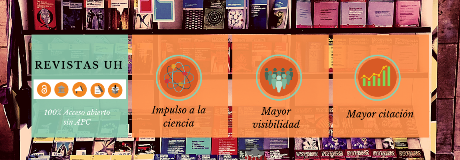Creativity and design
##plugins.themes.bootstrap3.article.main##
Abstract
The number of A3manos is dedicated to the first Biennial of Design in Havana, this publication is an opportunity to reflect on Cuba and its current Design and thus accompany the most important event of the profession in recent years, this was a Biennial that opened doors to creativity in new spaces to host ideas and projects. And it is precisely about CREATIVITY that I venture to share my point of view with readers in this editorial, thanks for reading.
"Creativity is the ability to find unsuspected solutions for apparently insoluble problems. It lacks magic or mysterious touches: creativity is nothing more than intelligence, an intelligence to a certain extent cultivable and developable, which in Through a great amount of apparently disconnected and chaotic information it can discover similarities that others do not discover, see options that others do not see, establish connections that others do not establish and, consequently, can produce new and surprising syntheses" . (Douglas R. Hofstadter)
However, creativity has been installed in our society with other meanings, being located more in the imagination, originality and transgression; on many occasions represented by the unusual, the unexpected, the surprising, the capricious and the different, where intuition prevails over rationality and inspiration over work.
And it is that creating, as a concept that gives life to creativity, is associated more with an unprecedented production, from scratch, than with the transformation of something pre-existing or with the response to problems with prior conditions. It identifies more with the individual creative genius than with the collective contributions to a solution; This interpretation stems from an emerging need in a society that is skeptical of its own referents and harassed by external patterns that lead it to need idols like oxygen; need "superior beings" such as athletes, singers, models, artists, architects... and gifted designers.
It is in this elitist conception of creativity where the origin of the cult of stardom and personality can be found. The creative ones, in today's society -says Norberto Chavesson like the Greek demigods, children of humans with deities: if a neighborhood girl gets pregnant by Zeus, what she will have as a child will be a designer.
This harmful notion of creative design, socially installed, presents a double distortion: it restricts the content and oversizes the container. Design is only seen in the simplest domestic problems, in products that guarantee the presence of aesthetics socially codified as "fashionable and contemporary". In other words, the social representation of design coincides with a typology of symbolic everyday objects where only one of its dimensions (formal) is what elevates it to the rank of an autonomous cultural genre, of great prominence and very close to art.< br> Outside of this medium, design disappears from the social imaginary, remaining hidden from the eyes of the people and paradoxically, the objects socially recognized as "design objects", that is, those marked by design, constitute a small universe, compared to the universe of objects effectively designed and necessary. Let's look around us and ask: who designs furniture for our hospitals, schools, social spaces, parks and bus stops" What high-tech Cuban products incorporate design in their development teams"
How does design accompany the levels of development that we exhibit in medicine, pharmaceuticals and biotechnology. Someone dares to say what we will put inside the new houses that we need.
It is sad but consumption and gastronomy have occupied the space of ancient cultural practices and, therefore, it is logical that imported models are reproduced, creative designers become members of the "cultural avant-garde". It is no coincidence that, of all the profiles of designers that exist, those who have assumed the objective of design as an act of adding symbolic value are the benchmarks of success within the guild.
This precedent makes design run the risk of becoming conceptual art, changing its purposes to a simple and opportunistic formal and symbolic innovation within the lack and commercial recycling of products and consequently in the enormous loss of energy and talent that is used in the modification of the form, from a basic model where the goal is reduced to finding something new among the infinite variations on the same theme. This and other realities are largely responsible for the mystification of creativity beyond its practical utility and its representations.
concrete nes.
Forms are transformed into value and value into merchandise, hence the design becomes a sales argument, as a price criterion and ceases to be a simple added value; it becomes the true merchandise giving way to an "abstract consumption" of meanings and adjectives where what is designed is not used, but acted on.
Creativity then is defined as an imaginary abstraction based on a new cult of design, which fertilizes the competition to occupy a space in stardom, among its most recognized professionals and award-winning products; this situation, which ends up legitimizing consumerism and life practices where it is important to have a "work" in the room and thus acquire the rank of design consumer, an attitude that moves away from the founding purposes of the profession and of creating.
Obviously, this socially predominant representation is not accidental, it is an ideological position closely linked to the socio-economic model that invades us and that we contradictorily ignore or underestimate. Everything seems laudable, healthy and possible, but for design, like a fish that bites its tail, this posture constitutes a source of multiple threats, just to name a few:
1.- Design is used to create formal and symbolic obsolescence of the product through its permanent reformulation without a logic of responsible use and consumption. THE DESIGN SHOULD CREATE SOLUTIONS AND NOT PROBLEMS.
2.- The form becomes an end in the stylization of new products to be fashionable and correspond to the paradigm of the collective imagination, relegating use and function. THE DESIGN MUST BE INTEGRAL AND ITS PRIORITY IS THE MAN.
3.- The designer is represented as an artist who guarantees originality and difference, the work is institutionalized as a cultural genre and not design as a profession. DESIGN IS A PROFESSION OF TECHNICAL SCIENCES.
4.- There is a risk of irreversibly entering the circuit of mass recreational consumption in galleries, museums, cultural centers and filling us with designers intoxicated in their ego. THE DESIGN SHOULD BE TO USE NOT TO CONTEMPLATE.
5.- Design makes products more expensive, spending on design is an alternative and not a necessity, designed products are sold with disproportionate commercial margins and are conditioned by the brand and the author. THE DESIGN SHOULD BE AN INVESTMENT NOT A COST. DESIGN IS ECONOMY.
Let us take care that design is not absorbed by the consumption system, that it finds in it a fertile space made in its image and likeness, a terrain where speculation and fictitious value overshadow the real needs of people and the use value of stuff. The media take from design, products and their authors those features that "sell" the most: stardom, avant-garde, economic success, etc. All of which brings the public into contact with design through cultural news, clandestine design and fashion magazines, the television package with its pseudo-advertisements and through word of mouth from the entertainment world that brings us the "last cry" of consumption.
If this imagery is installed and takes root in our midst, it will be difficult to recover the true notion of committed design that many of us dream of. The consuming public, businessmen, politicians, students and even teachers will fall into the temptation of adhering to the mediatically triumphant notion.
The task of promoting the real concept of design, the one effectively operating in reality, and relativizing commonplaces is therefore an urgent and collective objective. In order for our design and its relationship with culture to be structural and not merely anecdotal, we would have to do things differently, with radical thinking and clear clarity of the object of the profession in context and the designer model that the profession demands. society that we want to build and pass on to our children.
Consequently, we designers must assume the intellectual and ethical commitment to transform the reasons why the insertion of design as an activity is currently marginal in the productive and social scenarios, it is necessary to intentionally change the conditions that would have to occur for it to be fully fulfilled. . Either we begin to transform the object and objective of what we design or we will be swimming in the Renaissance banality of a pink society, lacking in essence, ignorant of the history of its material culture, with great possibilities of becoming saturated with dry leaves painted green, makeup of its shortcomings with brands and glamour.
We are surrounded by many objects and messages that we did not design and that is not good; in our context we have products designed without quality, commitment and success and that is bad, but if we invade our space with designs resulting from market whims, siren songs or bad decisions,that will be worse.
Whose fault is it that galleries and museums are filled with projects that do not find support, interest and a productive counterpart" It is the fault of the model, of the industry, of design, or of all of them. It's not that no one has it, it's that distributed it touches less. The future is fast and furious, but it doesn't smell like Chanell, at least for everyone, the majority sweats the heat of building the smells of few.
We need more design, just as creative, but more creative, creator of quality of life and not of lifestyles, creator of values ""and not of prices, creator of hopes and not of anxiety, creator of the present, dreamed of without giving up the future. There is no doubt that for designers as a whole to be able to create seriously and continuously at the service of the needs of society and not the market, it is essential that politically and economically transforming projects prosper, with the interest and support of institutions, industries and consumers. The creative designer concerned about his social role must, as a subject of change, work unreservedly to place his solutions in the hands of those who need them, defend the profession together with his true insertion and not wait for the prevailing model to fulfill its function on its own.
We cannot wait for the waters to rise to their level, changes are needed and we have to make them together, changes in the management of the profession, in the organization of its performance and even in the training of professionals, it will be up to the that design the model, to the industry, to the university and to society itself.
Today the organization of professional practice favors individuality, competition and private work. Where are the design offices, the prospecting and development agencies, the institutions that provide advice and support, the study centers, the business incubators, the prototype factories and laboratories, and the financing to work on what society really needs and it interests people.
The goal of the project is not to satisfy the designer's needs for self-expression but rather the user's needs under predetermined non-modifiable conditions. The starting point of all design is what and for whom, the decision of what to do comes before how, to identify and define the problem you have to be more creative than to solve it.
Deciding what to design is the first act of design. The universe is designed, at least the common problems already have a solution to be implemented, it is enough to look at the catalogs, the history books, the museums, it will be necessary to appropriate the professional Action Modes beyond the Projectual, it is necessary to Evaluate more , Investigate more to select, adapt and adapt the design to our people, their problems and contexts.
You have to design what is needed and not need what was designed. An SMS is 100 times more effective than a billboard, if we add to that that it is also infinitely cheaper"we would have to better design the devices to send messages and the design of these messages. An infographic reduces a long story to a page, a social transport is equivalent to 40 almendrones, 400 liters of diesel and tons of smoke less for our polluted life.
An impeccably modeled 3D project, a printed laminate, a biennial to share among colleagues can do little, it is hard to believe in what is created if it is not within our reach, if we do not use it. The development of technologies and excessive consumption lie in wait for us, the answers cannot continue to wait.
New and non-profitable problems await the modest efforts of creative people, it is about not wasting energy on doing more of the same, on making what exists different, on using creativity for the ego, for prizes, but on creating for different conditions, different people, in a different system.
If we accept the conception that "design" is an activity whose objective is the conception of products that fulfill a useful purpose, can be produced, and guarantee their circulation and consumption.
So it is legitimate in the search for solutions to redesign, recycle, recover, inherit and reuse solutions with noble purposes and useful ends, however, this is seen as uncreative and shames us; whenever we are given the opportunity we put everything apparently new in the solution to show off that we look like magazines. Nor do I agree with turning the creativity of poverty into our identity, into a business, fighting has merit, solving problems without recourse is an admirable capacity of our people, but that is not the design it deserves. You have to find a balance, not make the mistakes of others.
You have to enrich the soul and the meaning of life, but for this you have to feed, have health, education and comfort.to the body, I say more, to the bodies, to us, to everyone. Material culture needs solved problems, daily needs cannot be replaced with cultural consumption. We cannot wait for the basic functions of the objects we need to reach their commercial obsolescence to start designing the symbolic, to innovate in form and meaning, we have to do it all at once.
We are assisted by the privilege of living with problems to be solved, of designing with an integrating design concept where everything takes its place: aesthetics, sensations, use, identity and function and not one of them is what distinguishes a product, but that its value is in the combination of all. The designer is due to use and use is to see, distinguish, understand, share and enjoy.
The revolutionary changes that have occurred in science, technology and praxis, during the last century and in the present, require new epistemological and methodological perspectives of creativity, apply new knowledge and promote profound changes in mentalities with science and conscience, endorsed by a humanist culture that does not turn its back on man and the urgent needs of the great masses, who are really the ones who build history and the corpus of culture.
It is not possible to deny all the concepts, preconceptions and beliefs that guided the theory and praxis of professional work until today. They must be overcome dialectically, that is, in a process of negation and affirmation, of rupture and continuity, in a space of criticism and suspicion, and of plural and dialogical discourse, as any social scenario should be.
It is necessary to build methodological tools without nihilism and exclusivism, on the basis of the constructed cultural legacy that preceded us and continues to live in one way or another in consciousness and praxis.
Design, therefore, is not the aesthetics of today, nor is it responsible for innovation or the breaking of paradigms, it is not creativity. Design is the unavoidable phase of all material production in which the characteristics of a product are defined prior to its manufacture, whatever its style and degree of originality.
The practice of design today should not be conditioned by the myth of creativity, nor inscribed in any particular aesthetic and it does not constitute art in itself, but simply a phase of the industrial production process of any type of product.
I hope that in the next Biennial we will have more products in context, that our homes, hospitals and schools will be transformed into galleries, that the daily life of Cubans will be a real showcase of the development of design.
##plugins.themes.bootstrap3.article.details##

This work is licensed under a Creative Commons Attribution-NonCommercial-ShareAlike 4.0 International License.
- Attribution — You must give appropriate credit , provide a link to the license, and indicate if changes were made . You may do so in any reasonable manner, but not in any way that suggests the licensor endorses you or your use.
- NonCommercial — You may not use the material for commercial purposes .
- No additional restrictions — You may not apply legal terms or technological measures that legally restrict others from doing anything the license permits.
- ShareAlike — If you remix, transform, or build upon the material, you must distribute your contribution under the same license as the original. NOTE: This point applies to numbers 1 to 20 of the magazine with the previous CC-BY-NC-SA 4.0 license. Does not apply to the new CC BY-NC 4.0 license from Volume 11, Number. 21 (2024).






















